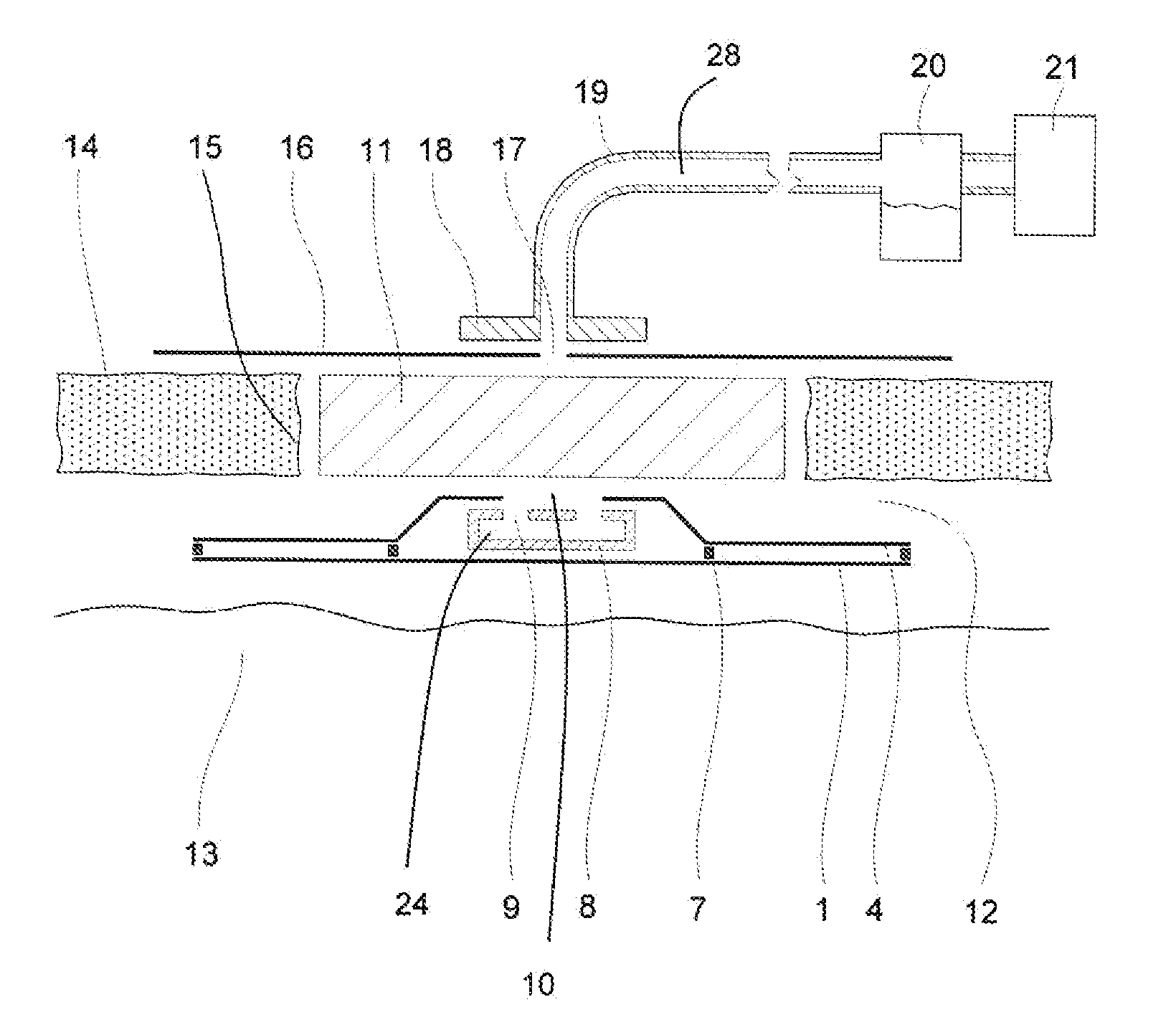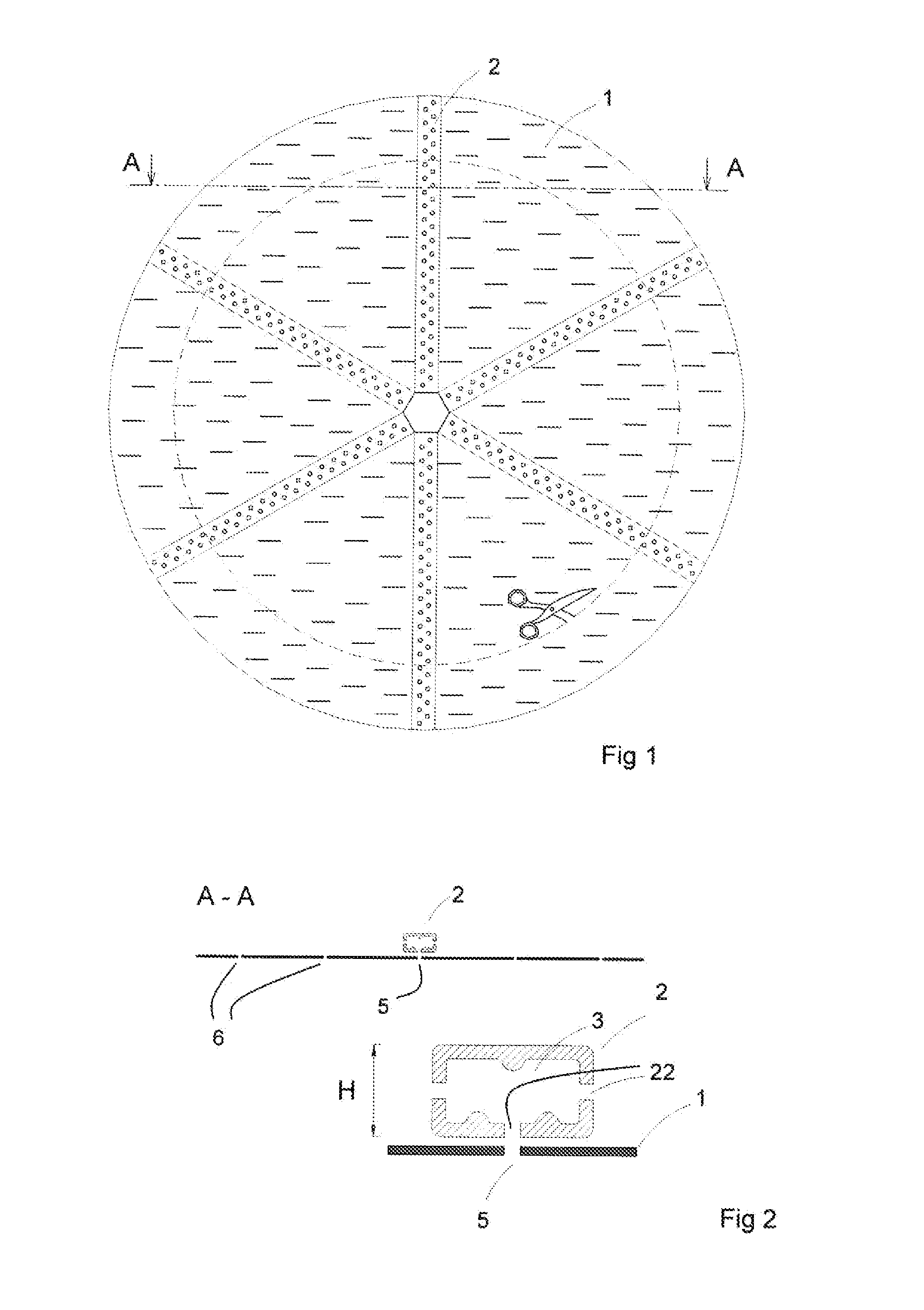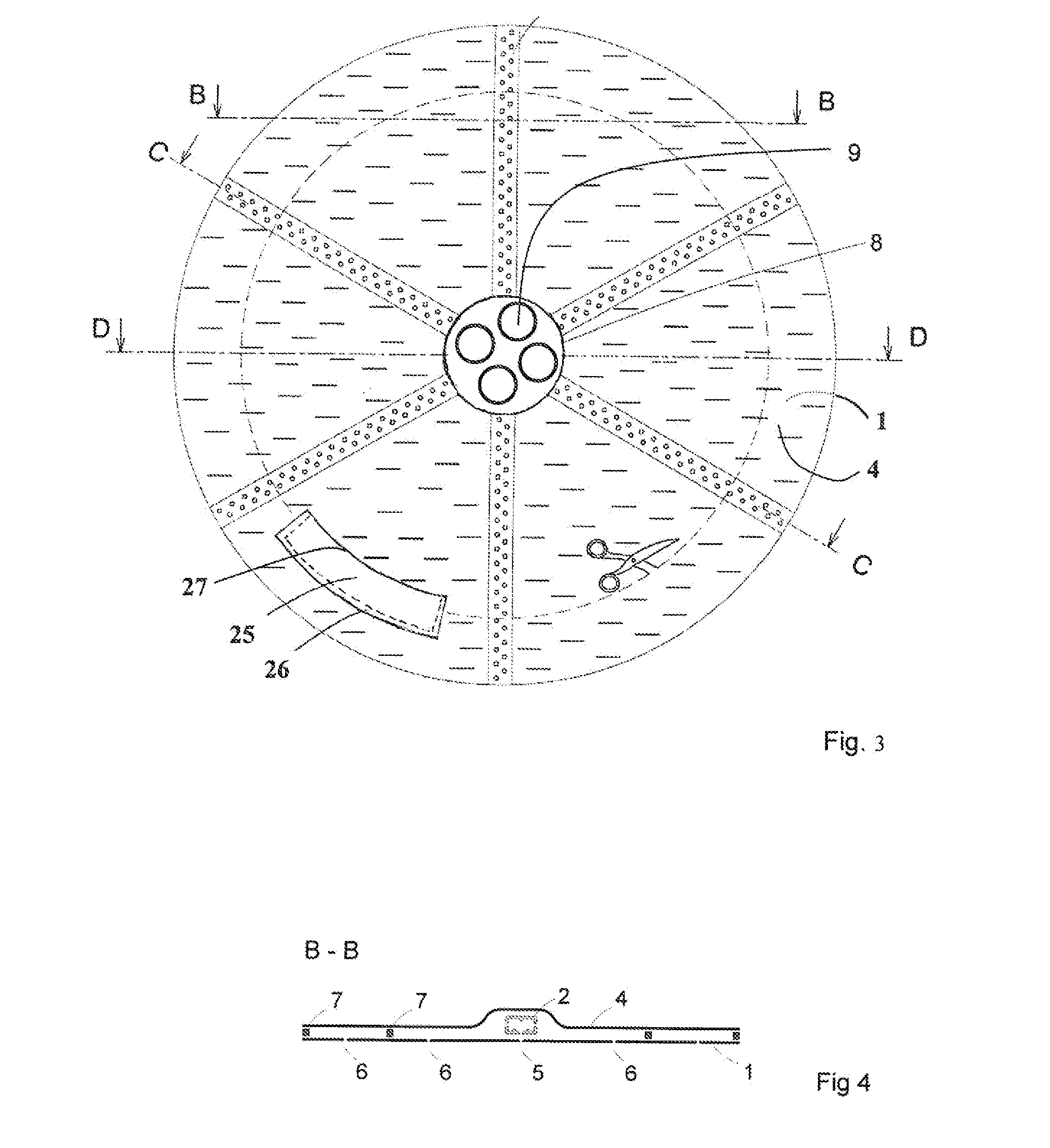Wound dressing for negative pressure therapy
a wound dressing and negative pressure technology, applied in the field of wound dressings for negative pressure wound therapy, to achieve the effect of increasing drainage capacity and user friendliness, easy application, and easy adaptability
- Summary
- Abstract
- Description
- Claims
- Application Information
AI Technical Summary
Benefits of technology
Problems solved by technology
Method used
Image
Examples
Embodiment Construction
[0151]in the embodiment shown in FIG. 1 and FIG. 2, multiple segments of a conduit (2) consisting of a pliable elastomeric material having a thickness (H) of not more than 30 mm are arranged radially on a first flexible film (1). The conduit (2) has a multiplicity of lateral openings (22) and at least one terminal opening (23). It is advantageous for the conduit (2) to be indissolubly bound to the first film (1), for example by adhesion. The conduit (2) ought to be planar, so that it can be indissolubly and extensively bound with at least 70% of its area projected perpendicularly onto the first film (1). Planar in this context is understood to mean that the ratio of width to height (H) of the conduit ought to be at least 1.25, more particularly at least 1.50. The conduit (2) should ideally be made of an elastomeric material which has a Shore A hardness of not more than 60, preferably less than 50, particularly preferably less than 45, more particularly less than 40. As shown by the ...
PUM
| Property | Measurement | Unit |
|---|---|---|
| thickness | aaaaa | aaaaa |
| depth | aaaaa | aaaaa |
| thickness | aaaaa | aaaaa |
Abstract
Description
Claims
Application Information
 Login to View More
Login to View More - R&D
- Intellectual Property
- Life Sciences
- Materials
- Tech Scout
- Unparalleled Data Quality
- Higher Quality Content
- 60% Fewer Hallucinations
Browse by: Latest US Patents, China's latest patents, Technical Efficacy Thesaurus, Application Domain, Technology Topic, Popular Technical Reports.
© 2025 PatSnap. All rights reserved.Legal|Privacy policy|Modern Slavery Act Transparency Statement|Sitemap|About US| Contact US: help@patsnap.com



